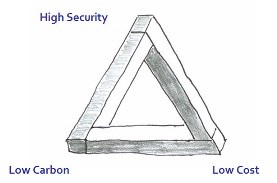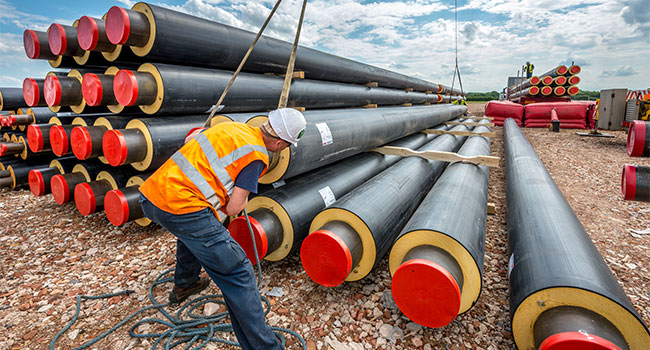District Heating Design
Mindful of the need to control carbon emissions, the Mayor of London has produced a District Heating Manual for London. It states that:
-
With energy at the heart of our major cities’
transformation to sustainable, resilient low-carbon
communities, the delivery of new energy
infrastructure will be critical to securing our
energy future. It is in this context that the
Mayor of London has produced this District
Heating Manual for London. The District Heating Manual is
intended to provide guidance to the
development and delivery of district heating
networks in London.
The 83 page document, produced in collaboration with Arup, is recommended for its practical approach to district heating design.
Particularly instructive is the chapter on "Innovation and the future of district energy in London" which looks at "the future direction of the district energy industry, in particular with regard to ‘fourth generation’ district heat networks".
Some quotes from the chapter:
9.2 Lowering operating temperatures of networks
Comfort heating temperature for domestic users is typically around 21°C and hot water for kitchen use is near 55°C. If low grade heating systems were employed in designs, such as larger radiators or underfloor heating, then the requirement for high flow and return temperatures in a district heating network would be reduced. Operating at lower temperatures increases the efficiency of the system due to the smaller temperature differential between the fluid and the ground, thereby reducing transfer losses. Operating at lower temperature also offers the opportunity to exploit waste heat from sources such as process energy harvesting and solar thermal energy.
By reducing the operating temperatures of the district heating network, the use of polymer pipework rather than steel becomes viable, thus significantly reducing the cost of materials and, with the removal of welding requirements and reduced transport costs, the cost of installation.
9.3 Heat storage and smaller pipes
Heat networks with a higher temperature differential require lower flow rates to deliver heat, thereby saving on heat transfer losses and pumping requirements. Pipe diameters can be reduced by lowering the heat demand in the loads through good practice energy efficiency measures. Localised hot water storage in individual buildings could be used to flatten the demand profile or buffer tanks on the primary side of the heat exchanger would have the same effect.
9.6 District Cooling
District cooling operates on the same principles as district heating, whereby chilled water is produced centrally and distributed through a network of insulated pipes. This removes the requirement for energy intensive local cooling in buildings, thereby reducing the city’s carbon output.
District cooling has been successfully incorporated into district heating networks in Helsinki and Copenhagen as a complementary system, making a trigeneration scheme providing electricity, heating and cooling. Copenhagen’s scheme uses cold seawater as a source of free cooling and uses surplus heat from the district heating network to drive absorption chillers to provide cooling when cold seawater cannot meet peak demand during the summer. This scheme has allowed Copenhagen to reduce the CO2 emissions by 67% when compared to traditional cooling.
The installation of a CHP district heating network is the ideal time to install district cooling when the major ground works are taking place to install the heating pipework. District cooling schemes are most attractive when there is a large heat sink locally, such as the sea which can act as a free source of cooling. In direct comparison with electrical chillers, the coefficient of performance of an absorption chiller is poor. As the grid decarbonises, it is important to consider both options for cooling.
The interesting threads of thought running through these points have been synthesized into a radical new approach to the design of heat networks which is being implemented by ICAX at the London South Bank University: a heat sharing network.

District Heating Design avoiding Combustion
There is an alternative to gas-based CHP district heating which is more effective in resolving each of the three facets of the Energy Trilemma. To avoid emitting CO2 from heating it is important to avoid combustion. This can be done with the electrification of heating and utilising:
- heat collection in summer,
- heat storage in the ground over the autumn
- and heat transfer in winter.
These can all be achieved using ground source heat pumps which also concentrate heat.
Instead of an expensive central energy centre sending hot water through an expensive steel pipe network, a small diameter flexible plastic pipe network connects each building with water close to ground temperature. Each building employs a heat pump to extract heat if it needs heating, or reject heat if it needs cooling.
This radically simpler mechanism yields no carbon emissions on site – nor any other product of combustion – and allows for incremental expansion of the network at marginal cost. Each building is in control of its own costs and its own temperature controls.
The following table compares traditional gas-based heat networks with the heat sharing alternative:
| Traditional Gas-Powered District Heating | Heat Sharing Networks |
| High cost of insulated pipework | Low temperature pipe network |
| No cooling without separate additional circuit | Cooling from heat pumps |
| Large additional cost for cold circuit | Separate cold circuit not required |
| High cost of central heat generation | Low cost local heat pumps borne by tenants |
| High running costs of central heat generation | Local heat pumps under tenants' control |
| Admin cost of metering, accounting, collecting revenues | Tenants pay their own electric cost directly |
| Heat Sharing dividend | |
| CHP systems emit CO2 and other noxious gases | No on-site emissions at all |
| Can use waste heat | |
| No heat recycling | Provides Seasonal Thermal Energy Storage |
| Uncertainty of future heat demand | Allows incremental expansion |
| Uncertainty of future heat sources | |
| Legal cost of agreements to share capital costs | Legal cost of agreements to share (lower) capital costs |
| Legal cost of agreements to share high running costs | Low central running cost minimises risk |
| Legals need to meet changes of tenants during the scheme | Fewer barriers to new tenants – low risk to existing tenants |
District Heating Network Projects
Groundwater heat pumps are ideal for providing heating and cooling on district heating networks: the optimum arrangement to enable heat recycling and avoid heat losses in the circuit is to use a heat sharing network. A heat sharing network circulates water at ambient ground temperature to a set of buildings, each of which can use groundwater heat pumps to extract heat when they need heating — and reject heat when they need cooling.
In a retrofit installation it is likely that a high temperature heat pump will be needed to avoid the need for refurbishing heat distribution systems already in place.
ICAX is involved in the design and installation of the following district heating schemes based on heat pumps:
- Balanced Energy Network: an open loop aquifer system at London South Bank University
- Community Heating Southwark: a set of open loop aquifer systems in Southwark
- Owen Square District Heating: a closed loop system at Easton, Bristol, including summer recharge.
See Low Carbon Heating See Low Carbon Cooling See Ground Source Energy

